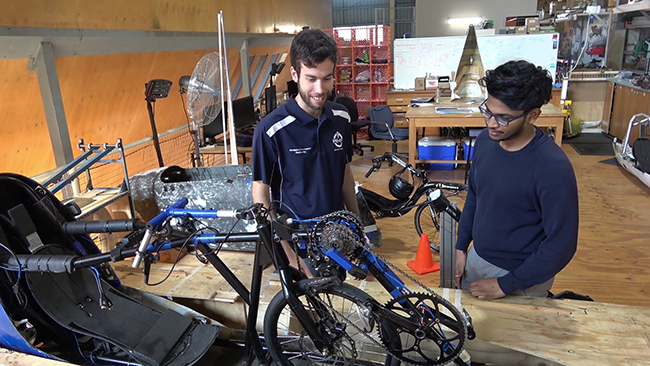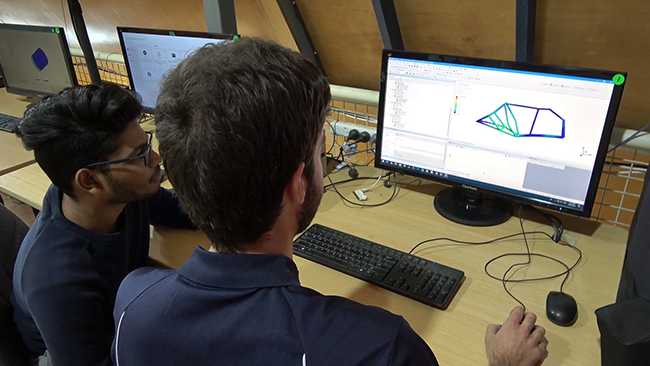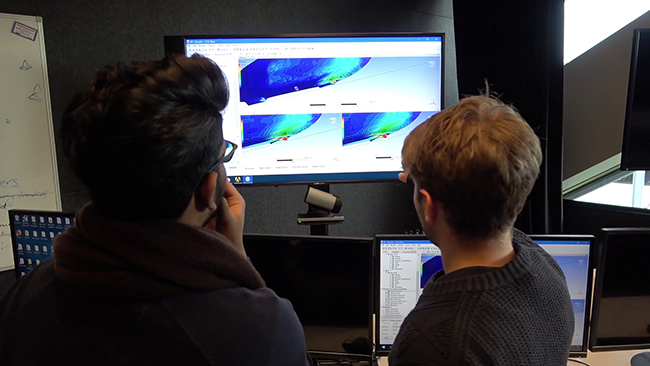We speak with Khesh Selvaganapathi, Graduate Application Engineer at LEAP who recently graduated as a Mechanical Engineer from Monash University & joined LEAP at the start of March 2020 - just a few weeks before the COVID-19 pandemic began causing widespread disruption and forced most LEAP staff to work from home...
When you were a university student, what kind of career did you want to pursue?
I had always wanted to be a pilot from a very young age. While growing up, I was fascinated with the engineering and technical aspects of airplanes and flights and naturally wanted to learn more, which later motivated me to study engineering at Monash University. Thankfully, I was first exposed to the applications of engineering simulation during my second year of university and, ever since, I have wanted to work in simulation!

How did you shape your experiences at university to help you achieve this career goal?
Apart from the normal academic units, I was also a part of a student-run organisation called Monash Human Power (MHP), where we designed and built a safe, fast, and efficient human-powered vehicle (HPV) and pushed it to its limits. During my time there, I was a part of the aerodynamics sub-team and was exposed to computational fluid dynamics (CFD) from the get-go. While studying, I also tried to broaden my experiences and skillsets by taking on internships every summer break, so that I could explore and understand different disciplines within mechanical engineering. For instance, one summer I worked with Maple Glass Printing as a Research Engineer. Another summer break, I worked at a HVAC consultancy. Finally, I also did my final year project with Bombardier, which gave me the opportunity to apply FEA to tram bogies.
What extra experience did you get from working in a student team such as Monash Human Power?
At MHP, we had sub-teams such as aerodynamics, chassis etc. so project management and systems engineering were very important within the team. Looking back, this was a great opportunity to continue to improve my soft skills, such as organisation and planning, conflict management and teamwork. Furthermore, through MHP, I had the opportunity to establish and connect with many industry professionals and like-minded individuals, such as through other student teams, Ford (MHP utilises Ford’s test track every year) and other industry sponsors. I am also thankful that, because of MHP, I was introduced to the world of simulation in the first place.
What motivated you to pursue a job at LEAP?
I first came across LEAP in my second year of university. I was watching LEAP’s YouTube videos to help me in our (MHP’s) process of running CFD simulations on our recumbent bike. These videos were informative and really helped me as a student and keen aerodynamics engineer. Ever since then, I consciously decided to keep in touch with LEAP: asking for help when needed and connecting with some of the LEAP employees over time, especially during training workshops organised with LEAP through the university, and through LinkedIn. Subsequently, I was fortunate enough to become an intern at LEAP in the final year of my university degree, which exposed me to many incredible industry customers at LEAP and opened my eyes to the possibilities of using simulation across a broader array of industries. As such, through my experiences as a LEAP intern, I definitely realised that I wanted to work here!
What do you enjoy about working at LEAP so far?
One of my most favourite aspects of working at LEAP so far is being able to work on different applications each day. We have hundreds of customers, so I get to work on a range of engineering projects, which so far have ranged from defence projects to carpark ventilation to trains and others. I’ve been mentored on these projects by senior members of LEAP’s technical team who each have many years (or even decades) of experience in the simulation industry, so I view this as a once-in-a-lifetime opportunity to learn from these experts each day.
What are your observations on trends in simulation based on your experience within MHP and now at LEAP?
When I initially started one of those 2D wing CFD tutorials in my second year of university, I must admit that I found it quite difficult to follow the tutorial. However, over the years, I found that the accessibility to learning resources has become a lot easier. There are so many great YouTube tutorials out there with nice clear instructions from Ansys and Ansys channel partners, like LEAP, in addition to specific content like LEAP’s learning hub (https://learn.leapaust.com.au/). Also, the GUI and workflows within Ansys, even in the few years I’ve been using it, have come a long way and, thankfully, it means that it is much easier than ever for new users to get started.
Also, as a student, you typically do not have the best hardware to run these simulations so that can initially be a barrier – but nowadays we have access to Ansys Cloud, and Ansys is supported on all the main cloud platforms like AWS and Azure. Universities like Monash also provide access to high-performance computing to support student;s engineering simulations, which also makes it easier to access HPC hardware to run realistic simulations whilst still at university.
How has COVID19 impacted your graduate year now that you’re employed at LEAP?
I started full-time work at LEAP at the beginning of March and later that same month we went into lockdown and started working remotely. So, while it was fun and exciting to be in the office initially, I really do miss the daily interactions within the office! We’ve obviously used virtual meeting and collaboration tools like Microsoft Teams a lot, which play a major role in keeping in touch with my colleagues and mentors within LEAP. However, let’s face it, it is still not the same as being in the physical office, so, of course, I miss the office banter and personal interactions. I also miss the opportunity to just listen in on technical conversations that my senior colleagues might be having, which is a big learning opportunity for a graduate engineer.
What advice do you have for students interested in pursuing a career using engineering simulation?
First off, make sure you use your time at university to properly understand the theory behind the process and the solver. What I mean by this is that you should not just study for your exams and grades (and just memorise), but study to learn and understand the concepts completely! I'm a big advocate of trying to maximise and make use of your summer and winter breaks by applying for and securing internships whenever you can 😊. Also, use extra-curricular activities, such as the student team competitions, to get hands-on experience in a technical field that you’re passionate about. These opportunities are a great way to apply engineering simulation tools like Ansys to real-world problems while working as part of a real engineering team. Based on feedback from my new colleagues at LEAP, this is an experience that will help you really stand out when you graduate!
To hear about job opportunities and to keep informed about new technologies that are transforming engineering & product design, we recommend you follow LEAP Australia at our social channels below, as well as subscribe to our regular news digest:














